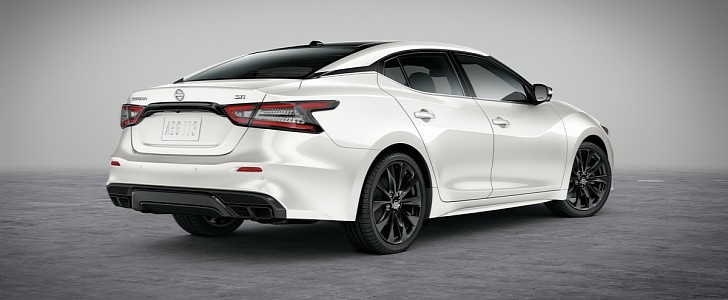Released in 1980 for the 1981 model year, the Maxima switched from rear- to front-wheel drive a few short years later. The current generation rolled out in 2015 for the 2016 model year, and Nissan has confirmed that it’s going the way of the dodo in 2023 due to increasingly poor sales.
From a high point of 163,138 units in the United States in 1994, the Maxima fell to 16,386 units in 2021. Nissan said that it’s prioritizing all-electric vehicles going forward, which is why this nameplate is believed to come back in 2025 as a zero-emission sedan alongside an Infiniti-badged sedan.
In the meantime, Nissan waxes lyrical that the 2023 model “combines bold style, sporty driving dynamics, and helpful technology.” Considering the aforementioned sales, Nissan ought to eat some humble pie. The highlights of the attached press release come in the guise of standard Nissan Safety Shield 360, Apple CarPlay and Android Auto, as well as a Top Safety Pick+ award from the Insurance Institute for Highway Safety. Boring even by rental car standards, isn’t it? It’ll soon get even more boring, though…
What’s actually new for 2023? From a visual standpoint, the new brand logo is the only item listed by Nissan. Step up to the range-topping Platinum trim level, and the only differences from 2022 are the standard illuminated kick plates and semi-aniline leather. That’s it, and it’s not nearly enough to renew interest in this car, especially not when SUVs and trucks reign supreme.
Now on sale from $38,140 excluding destination charge, the Maxima SV is joined by the Maxima SR ($43,300) and Maxima Platinum ($44,250). All three come with a CVT supplied by the worst name in the business, Nissan subsidiary JATCO. Looking at the glass half full, the multi-point-injected V6 engine isn’t shabby at all. 300 horsepower, 261 pound-foot (354 Nm) of torque, and 24 miles per gallon (9.8 liters per 100 kilometers) are okay numbers for a naturally-aspirated powerplant in a full-size application.
In the meantime, Nissan waxes lyrical that the 2023 model “combines bold style, sporty driving dynamics, and helpful technology.” Considering the aforementioned sales, Nissan ought to eat some humble pie. The highlights of the attached press release come in the guise of standard Nissan Safety Shield 360, Apple CarPlay and Android Auto, as well as a Top Safety Pick+ award from the Insurance Institute for Highway Safety. Boring even by rental car standards, isn’t it? It’ll soon get even more boring, though…
What’s actually new for 2023? From a visual standpoint, the new brand logo is the only item listed by Nissan. Step up to the range-topping Platinum trim level, and the only differences from 2022 are the standard illuminated kick plates and semi-aniline leather. That’s it, and it’s not nearly enough to renew interest in this car, especially not when SUVs and trucks reign supreme.
Now on sale from $38,140 excluding destination charge, the Maxima SV is joined by the Maxima SR ($43,300) and Maxima Platinum ($44,250). All three come with a CVT supplied by the worst name in the business, Nissan subsidiary JATCO. Looking at the glass half full, the multi-point-injected V6 engine isn’t shabby at all. 300 horsepower, 261 pound-foot (354 Nm) of torque, and 24 miles per gallon (9.8 liters per 100 kilometers) are okay numbers for a naturally-aspirated powerplant in a full-size application.









